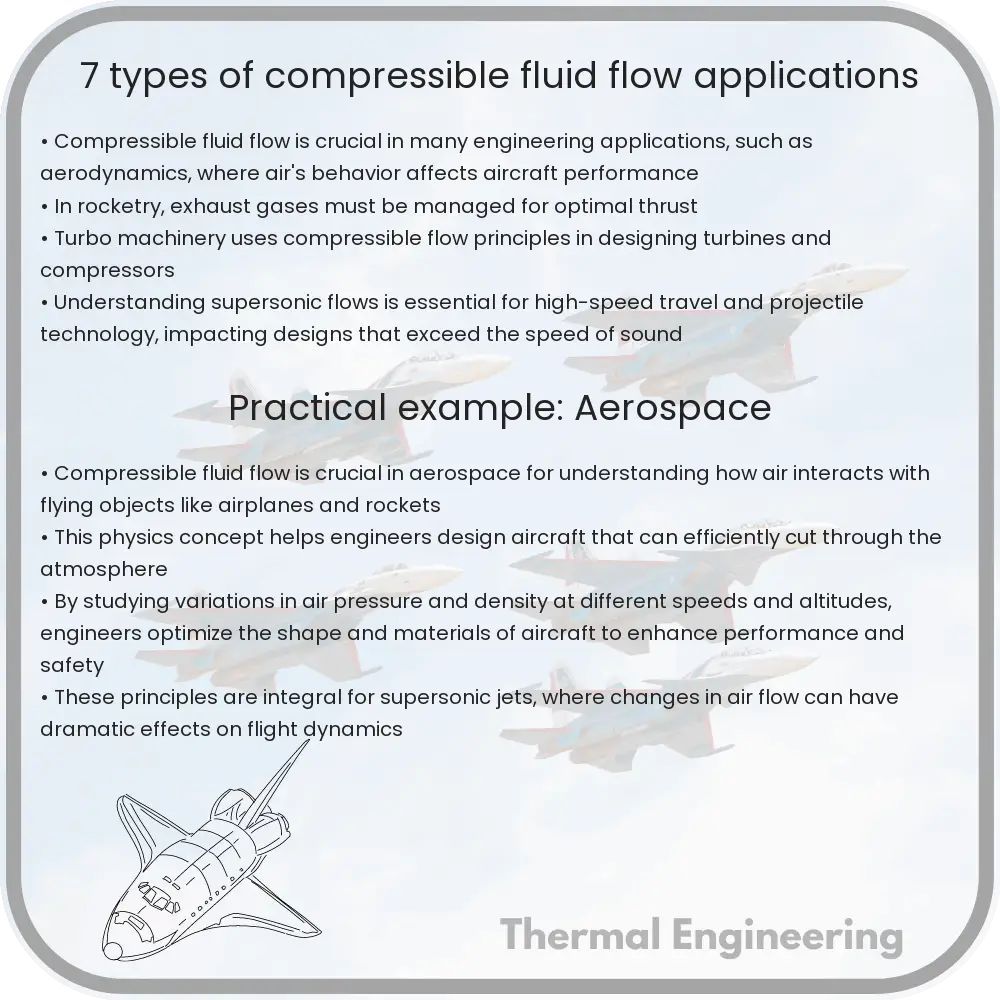Uncover the dynamics of compressible fluid flow, emphasizing its variability in density due to changes in pressure and temperature, and its pivotal role in diverse engineering applications.

Understanding Compressible Fluid Flow: Its Importance and Applications
Compressible fluid flow refers to the movement of fluids (most often gases) in which the fluid density can vary significantly due to changes in pressure and temperature. This variability distinguishes it from incompressible flow, where density remains nearly constant. The study of compressible flow is crucial in numerous engineering applications, particularly where high velocities or significant pressure variations occur.
This article explores seven key applications of compressible fluid flow that illustrate its importance in both everyday and specialized engineering contexts.
1. Aerospace Engineering
- Aircraft Design: High-speed aircraft, such as commercial jets and fighter planes, experience significant changes in air density at high altitudes and speeds. Compressible flow principles are essential for understanding shock waves, boundary layers, and overall aerodynamics critical in aircraft performance and safety.
- Space Vehicles: Rockets and space shuttles moving through the atmosphere and into space experience variable atmospheric density. Compressible fluid dynamics help in designing these vehicles for optimal thrust and fuel efficiency.
2. Automotive Engineering
- Engine Intakes: The design of air intake systems in combustion engines involves compressible flow to optimize air-fuel mixtures, improving efficiency and power output.
- Turbochargers and Superchargers: These components use compressible flow dynamics to increase the engine intake air pressure, boosting the engine’s power without increasing its size.
3. Power Generation
- Steam Turbines: In power plants, steam often undergoes dramatic pressure and temperature changes, hence understanding compressible flow is vital for the design and operation of turbines and other related equipment.
4. HVAC Systems
- High-speed Duct Flow: For HVAC systems in large buildings or in vehicles, effectively designing ductwork requires understanding how gases behave under different pressures and temperatures to maintain comfort and system efficiency.
5. Environmental Engineering
- Wind Engineering: The study of wind effects on landscapes, buildings, and other structures often deals with varying air densities and velocities, requiring knowledge of compressible flow.
6. Chemical and Process Engineering
- Pipe Transport of Gaseous Substances: Transporting gases in industrial processes often involves varying pressures that can only be effectively managed by applying compressible flow principles to prevent accidents and ensure efficiency.
7. Defense and Military Applications
- Ballistics: The behavior of gases in gun barrels and propulsion systems of projectiles involves rapidly changing pressures and temperatures, critical for the design and effectiveness of weaponry.
- Explosive Ordinance Disposal: Understanding shock waves and their propagation through air, essential for assessing risks and effects of explosions, is a key application of compressible flow in military contexts.
The applications mentioned provide just a glance at how wide and critical compressible fluid flow is in various fields of engineering. Each application leverages the unique properties of gases at varying pressures and temperatures to enhance system performance, safety, and efficiency, underscoring the importance of this area of fluid mechanics.